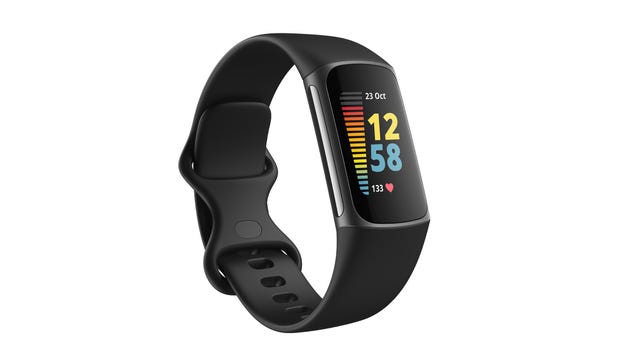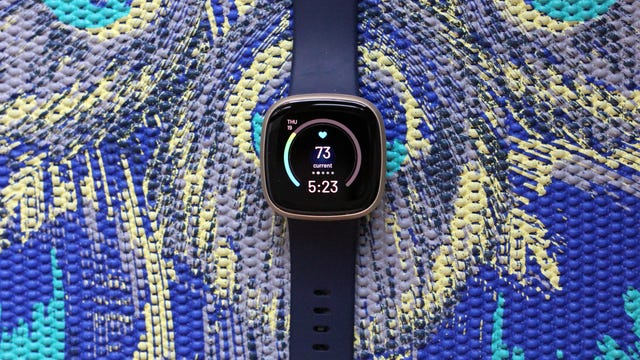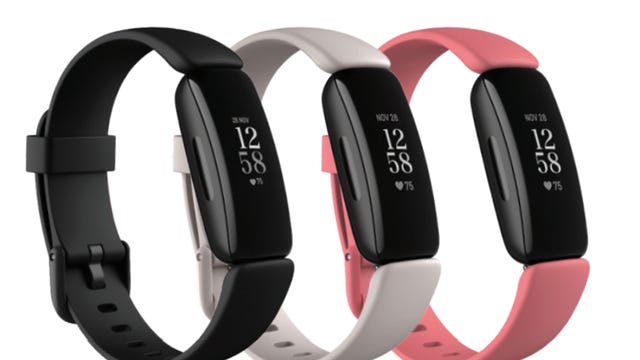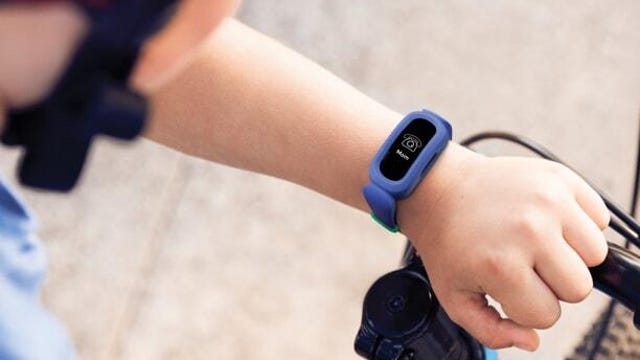Fitbit makes some of the overall best fitness trackers on the market, claiming multiple spots on our list of the best trackers available in 2023. And there’s a wide range of models to choose from, whether you’re after a budget-friendly basic fitness tracker, or an advanced smart watch that’s packed full of features. And to help you find the best Fitbit fitness tracker for your needs, we’ve broken down the best options on the market right now below.
There have been some advancements in Fitbit’s catalog of wearables since this article was first published — notably the Versa 4 and Inspire 3. Whether you’re shopping for gifts or just perusing the different Fitbit devices out there, here’s a roundup of the best Fitbits available right now.
If you’re looking for a fitness tracker that offers the best available features for collecting health data, while also being comfortable, easy to use (no buttons) and easy to read outside in the sunshine — all at a reasonable price — Fitbit’s Charge 5 wins.
The Charge 5 tracks things such as your heart rate through an EKG reading app, your stress level through an electrodermal activity sensor, and your blood oxygen level and skin temperature. It also tracks your sleep patterns, including breathing rates, sleep stages and restlessness. The Charge 5 monitors over 20 different physical activities, including swimming (it’s water-resistant), yoga and cycling. It also has a built-in GPS, which is great for runners and has 20 exercise modes.
The Charge 5 is compatible with iPhones and Androids. However, iPhone users can only see notifications on the Charge 5 screen, while Android users may send quick replies.
Note: There is a new Versa model, the Versa 4, which has a thinner design and more exercise features.
The Versa 3 is a Fitbit smartwatch that combines the best features of the Charge 5 tracker with the “taking calls on your wrist” aspect of a smartwatch rather than purely a fitness tracker. Although Fitbit’s best smartwatch and best Apple Watch alternative may not be quite as smart as its Apple or Galaxy Watch competitors, it is compatible with both Apple and Android operating systems, and can also be paired with either Alexa or Google Assistant. One of the best features of the Versa 3 is its strong battery life — up to six days without the “always on” display and with moderate use. (The Apple Watch, for comparison, has a less-than-ideal battery life of a day and a half.)
The more expensive Fitbit Sense provides more health data, but the relevance of all the data Sense gives you might be moot, depending on if you know how to read medical charts. You’ll save money and lose little by going for the Versa 3 smartwatch instead.
A note about Fitbit’s Premium subscription: For $10 a month or a one-time payment of $80 for a year, Fitbit’s Premium subscription can give you more insight into your sleep and stress patterns, as well as things such as guided meditation and workouts. The Versa 3 comes with a three-month trial of Premium, and the Charge 5 comes with a six-month period. To find out more about whether Fitbit Premium is worth it, check out this guide.
Fitbit Premium also includes what it calls a Daily Readiness Score, which is Fitbit’s assessment of whether you need to take it easy today or if you should push yourself based on your goals for the week. This is now available for some Fitbit models, including the Versa 3.
Note: There is a new Inspire model, the Inspire 3. You can read the review here, but the Inspire 2 is still cheaper.
The Fitbit Inspire 2 is the cheapest device for adults, and it gets the job done. The “easy” Fitbit tracks health essentials that include Active Zone Minutes and heart rate. The Inspire 2 comes with a free yearlong premium subscription so you can unlock personalized health insights and programs to help you improve your nutrition, sleep and other aspects of health.
The Inspire 2 doesn’t have GPS, and it doesn’t include special features such as being able to measure your blood oxygen level, but this tracker is a great (and more affordable) introduction to fitness tracking if you or someone you know is interested in monitoring their health information. The Inspire 2’s included subscription to Fitbit Premium is also far more generous than other Fitbit models.
If you want to count your steps and look like you’re wearing jewelry instead of a fitness device, the Fitbit Luxe is for you. It offers many of the same features as other Fitbits, such as goal-based workouts, but it does so in a smaller and more fashionable form that might be best for smaller wrists. (The design in general is smaller, so the text on the watch’s screen may also be too small for some people to read.)
Aside from its sleeker appearance, the biggest difference between the Luxe and other models might be its focus on general wellness tracking over more specific health data. When the Luxe calculates your stress rate, for example, it uses activity levels, sleep and heart rate instead of an electrodermal activity sensor as seen in the Charge 5 and Sense.
This one is pretty simple: The Fitbit Ace 3 is specifically for kids to help track sleep and activity, two crucial things for young bodies. Goals can be set on the Ace 3 for active minutes as well as reminders for going to bed and staying active. For kids who have their own phone, the tracker can also deliver call notifications (you know, for when you forget to call Mom).
The Ace 3 comes in cosmic blue with green adjusters, black with red adjusters or a “Minions yellow” for kids who are fans of the goggle-eyed animated creatures.





